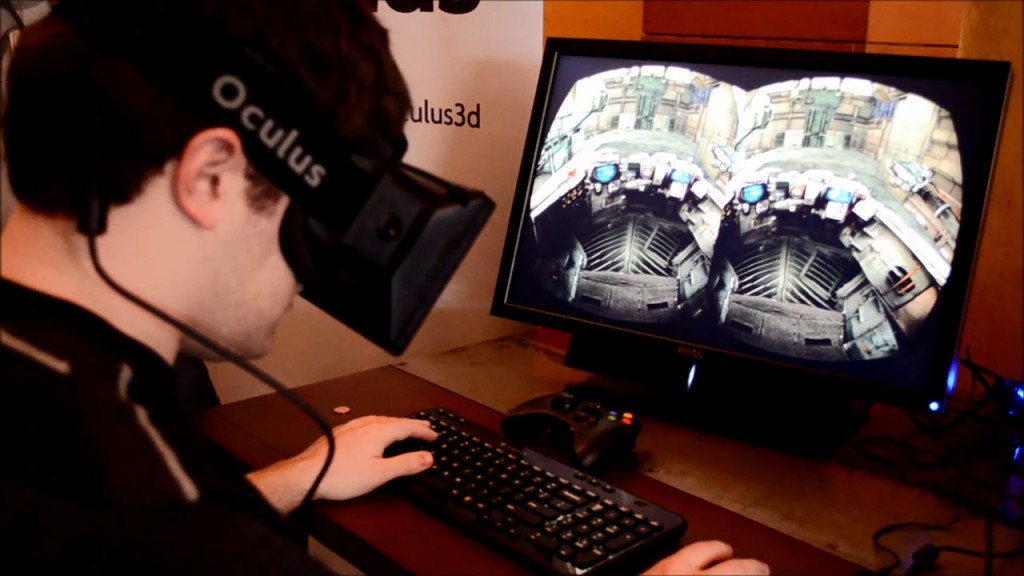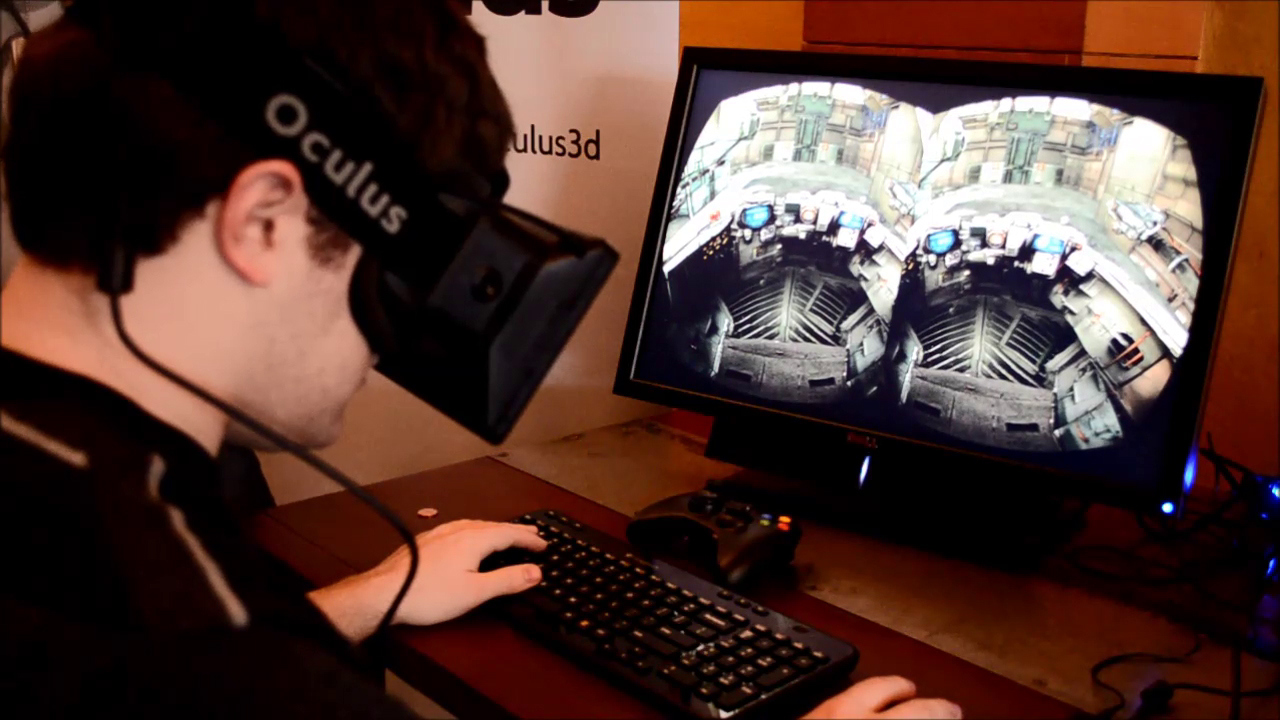By Jeremy Hannaford (Contributor) – Email
Print Edition: October 22, 2014

After all the extensive hype, the shortage of manufacturing materials, and the enormous amount of advertising promotions it has been associated with, the Oculus Rift still feels unfinished — but there’s much more to come.
Despite all of the games and simulations available on Rift application distributors, they were either non-functional or glitch-infested. This is to be expected for a device still in its second alpha development kit; the device is still meant to be released for the public in April 2015, so there is a fair amount of testing to be done.
While the number of games and simulations were few, the level of immersion was certainly surreal. In the first test simulation, I walked around a kitchen that was plaid white and had a photo of James Dean against the wall. As simplistic as that may sound, it was intriguing to move about with my head movements in this fake kitchen.
But looking at a certain plant from a certain angle caused a vision-freeze glitch when I move out of the infrared sensors. This is by far the biggest issue that the Rift has to face, as it can really twist your stomach. A simple image freeze turns your cognitive senses completely upside down. The lack of movement despite actual movement causes instant dizziness and a loss of balance. Though I was sitting in a chair, I felt I was going to spill my lunch all over the floor — a definite issue to fix. The risk of seizures and other rapid light-related illnesses has also increased with the Rift, which the developers are evidently aware of, as every application flashed a warning prior to activation.
But the gameplay experiences that worked were exceptionally entertaining. A game we tried that has garnered a large audience was Dreadhalls, a simple horror game that tasks you with escaping a dark, gloomy maze which resembles the Windows 98 screensaver.
While it is extremely bare-bones, being locked in the world inside the headset intensifies the gameplay experience tenfold, especially with a horror game. The lack of light, the eeriness of a distant scratching noise, and hints of monsters all created a severely horrifying experience. Upon coming across a hollow woman, she gave chase and I backed up, trying to find the door from where I had come. It was at this moment that I realized I had the ability of using this visual device for its full intended purpose.
I turned my head around.
I was able to see the door and find my way to it. But instead of hiding, I walked into the monster to see what would happen. She screamed in my face (without audio), and the game restarted. A bit of a disappointment, but I had already experienced quite a fright.
There is still so much to be explored with this device, and so many more applications to be added. With this kind of experience already available, what will be next?


